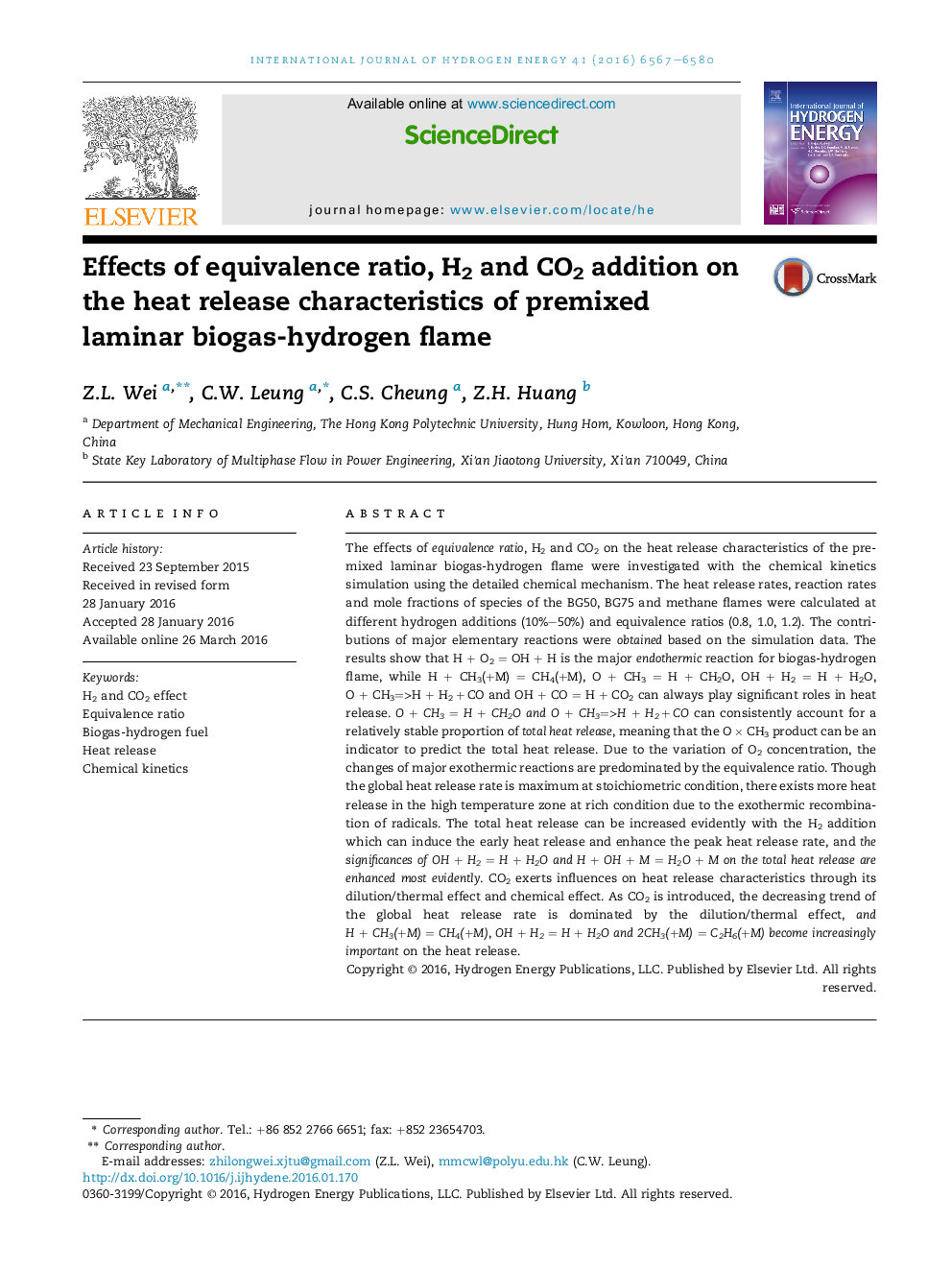| کد مقاله | کد نشریه | سال انتشار | مقاله انگلیسی | نسخه تمام متن |
|---|---|---|---|---|
| 7711310 | 1497410 | 2016 | 14 صفحه PDF | دانلود رایگان |
عنوان انگلیسی مقاله ISI
Effects of equivalence ratio, H2 and CO2 addition on the heat release characteristics of premixed laminar biogas-hydrogen flame
دانلود مقاله + سفارش ترجمه
دانلود مقاله ISI انگلیسی
رایگان برای ایرانیان
کلمات کلیدی
موضوعات مرتبط
مهندسی و علوم پایه
شیمی
الکتروشیمی
پیش نمایش صفحه اول مقاله

چکیده انگلیسی
The effects of equivalence ratio, H2 and CO2 on the heat release characteristics of the premixed laminar biogas-hydrogen flame were investigated with the chemical kinetics simulation using the detailed chemical mechanism. The heat release rates, reaction rates and mole fractions of species of the BG50, BG75 and methane flames were calculated at different hydrogen additions (10%-50%) and equivalence ratios (0.8, 1.0, 1.2). The contributions of major elementary reactions were obtained based on the simulation data. The results show that HÂ +Â O2Â =Â OHÂ +Â H is the major endothermic reaction for biogas-hydrogen flame, while HÂ +Â CH3(+M)Â =Â CH4(+M), OÂ +Â CH3Â =Â HÂ +Â CH2O, OHÂ +Â H2Â =Â HÂ +Â H2O, OÂ +Â CH3=>HÂ +Â H2Â +Â CO and OHÂ +Â COÂ =Â HÂ +Â CO2 can always play significant roles in heat release. OÂ +Â CH3Â =Â HÂ +Â CH2O and OÂ +Â CH3=>HÂ +Â H2Â +Â CO can consistently account for a relatively stable proportion of total heat release, meaning that the OÂ ÃÂ CH3 product can be an indicator to predict the total heat release. Due to the variation of O2 concentration, the changes of major exothermic reactions are predominated by the equivalence ratio. Though the global heat release rate is maximum at stoichiometric condition, there exists more heat release in the high temperature zone at rich condition due to the exothermic recombination of radicals. The total heat release can be increased evidently with the H2 addition which can induce the early heat release and enhance the peak heat release rate, and the significances of OHÂ +Â H2Â =Â HÂ +Â H2O and HÂ +Â OHÂ +Â MÂ =Â H2OÂ +Â M on the total heat release are enhanced most evidently. CO2 exerts influences on heat release characteristics through its dilution/thermal effect and chemical effect. As CO2 is introduced, the decreasing trend of the global heat release rate is dominated by the dilution/thermal effect, and HÂ +Â CH3(+M)Â =Â CH4(+M), OHÂ +Â H2Â =Â HÂ +Â H2O and 2CH3(+M)Â =Â C2H6(+M) become increasingly important on the heat release.
ناشر
Database: Elsevier - ScienceDirect (ساینس دایرکت)
Journal: International Journal of Hydrogen Energy - Volume 41, Issue 15, 27 April 2016, Pages 6567-6580
Journal: International Journal of Hydrogen Energy - Volume 41, Issue 15, 27 April 2016, Pages 6567-6580
نویسندگان
Z.L. Wei, C.W. Leung, C.S. Cheung, Z.H. Huang,